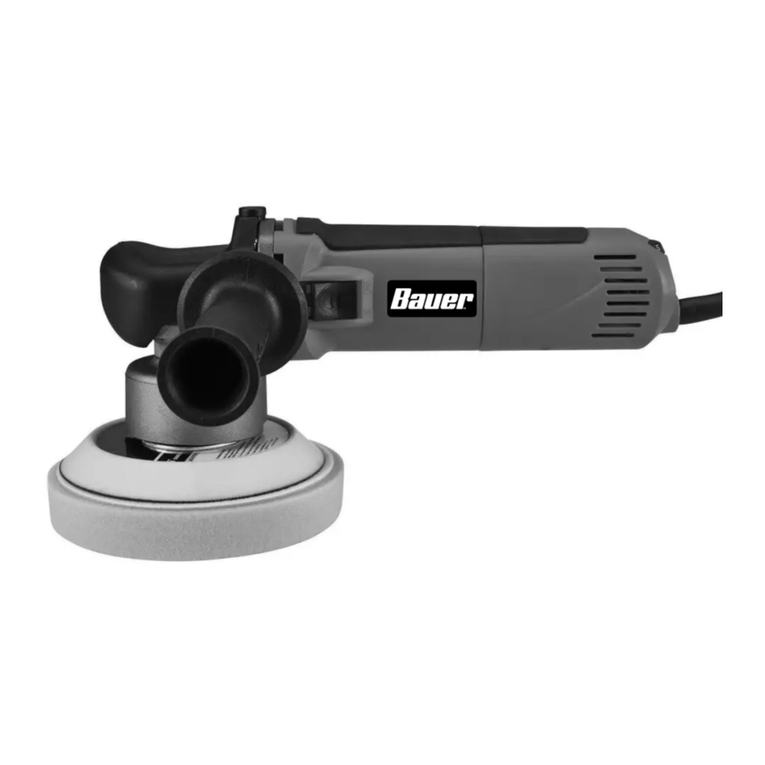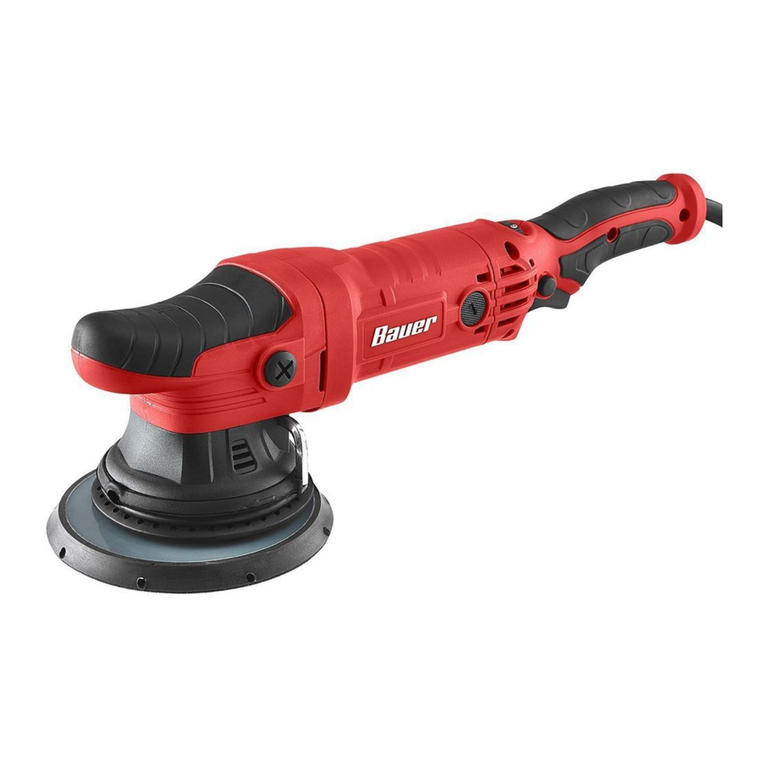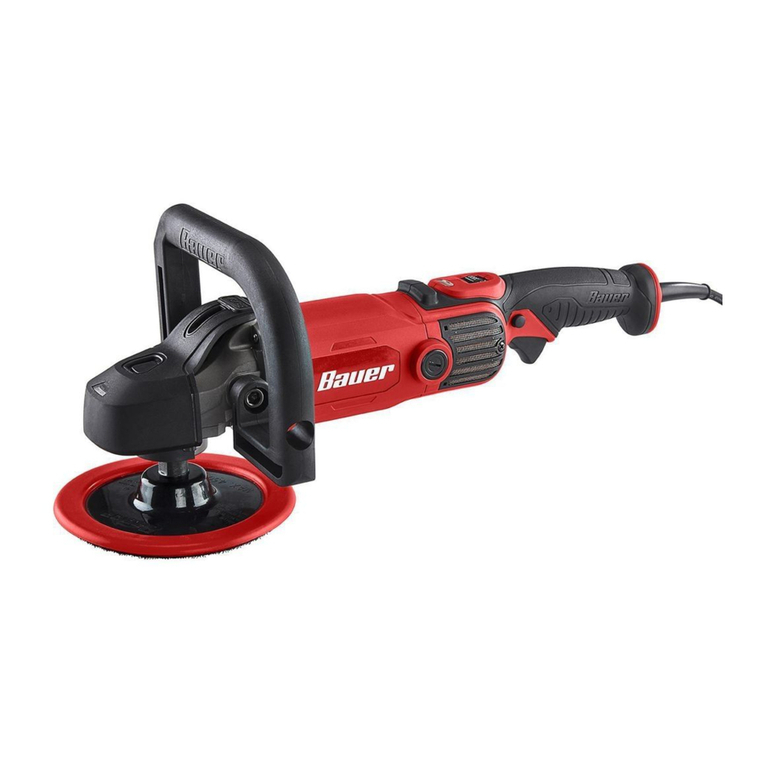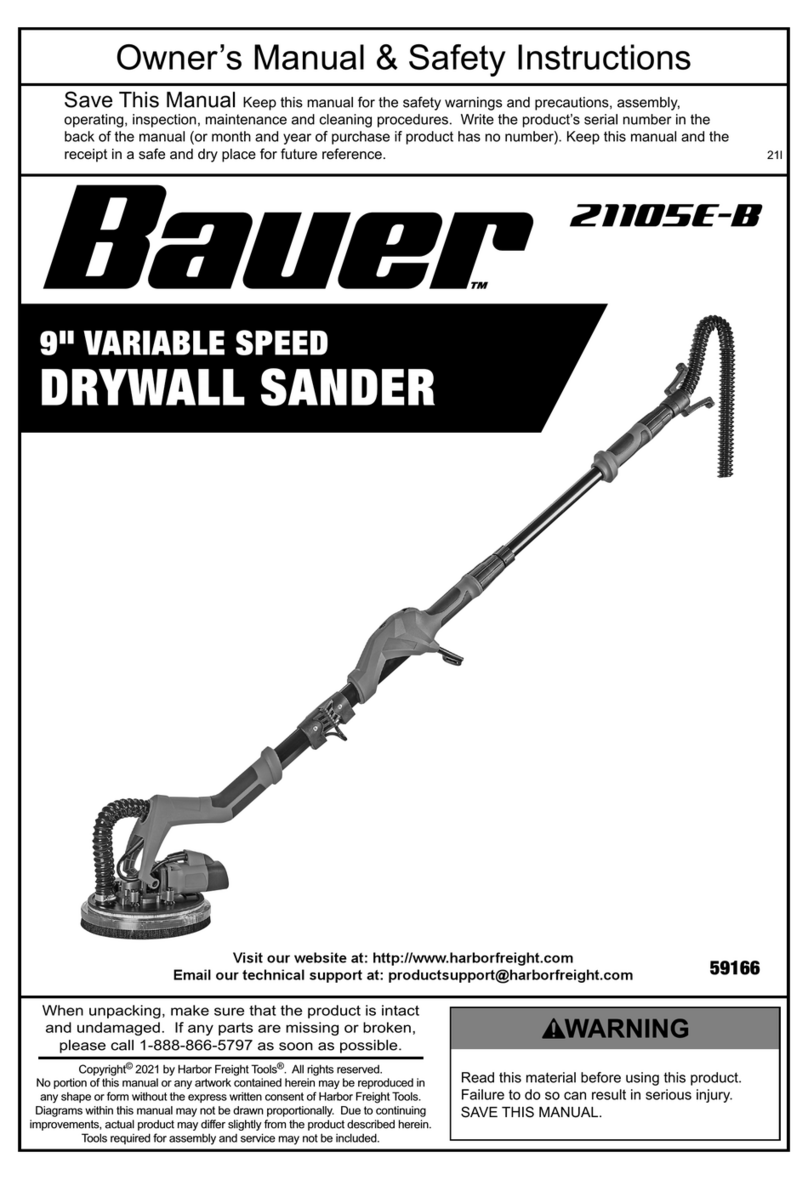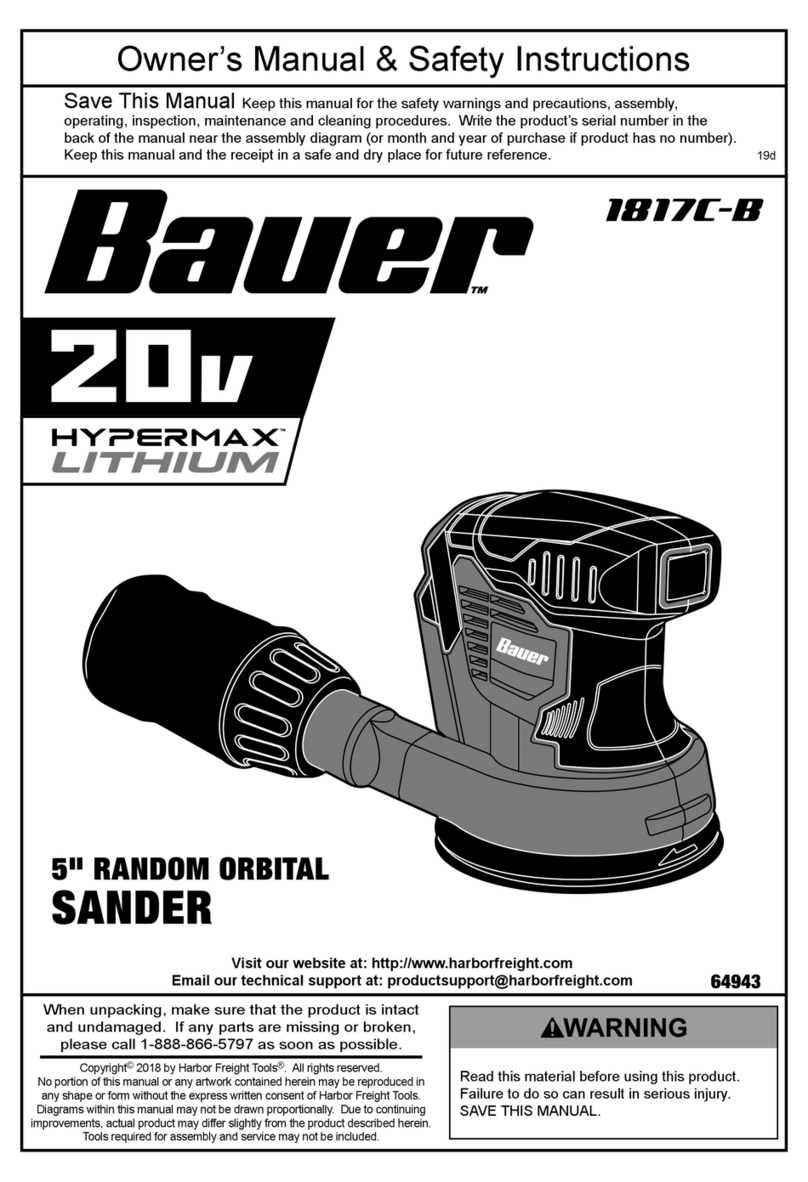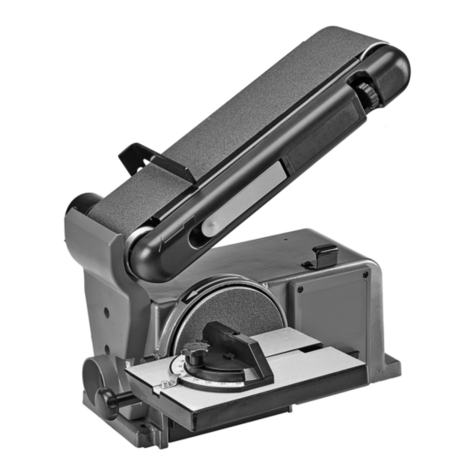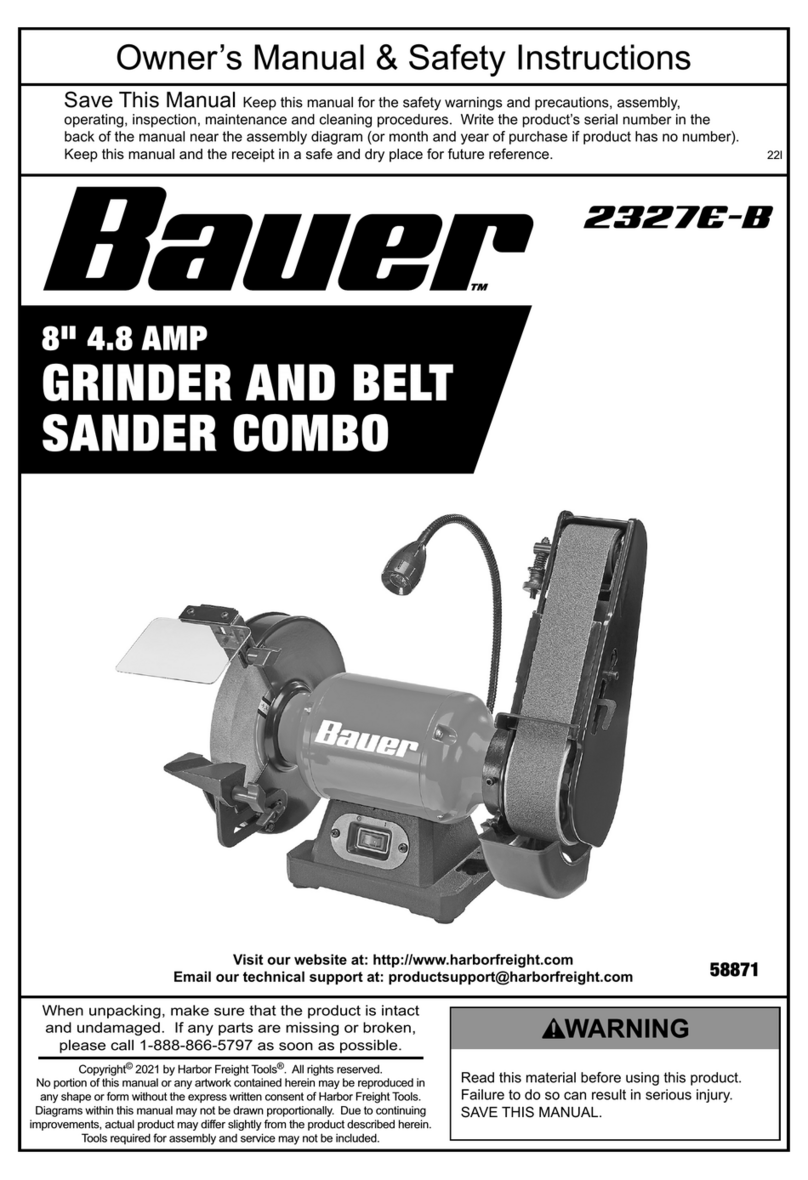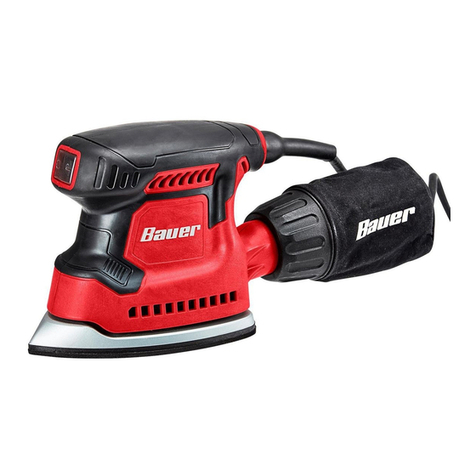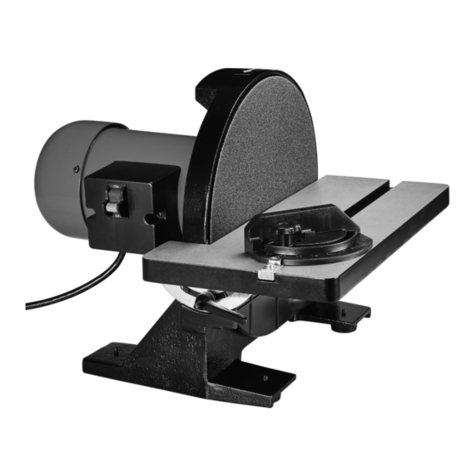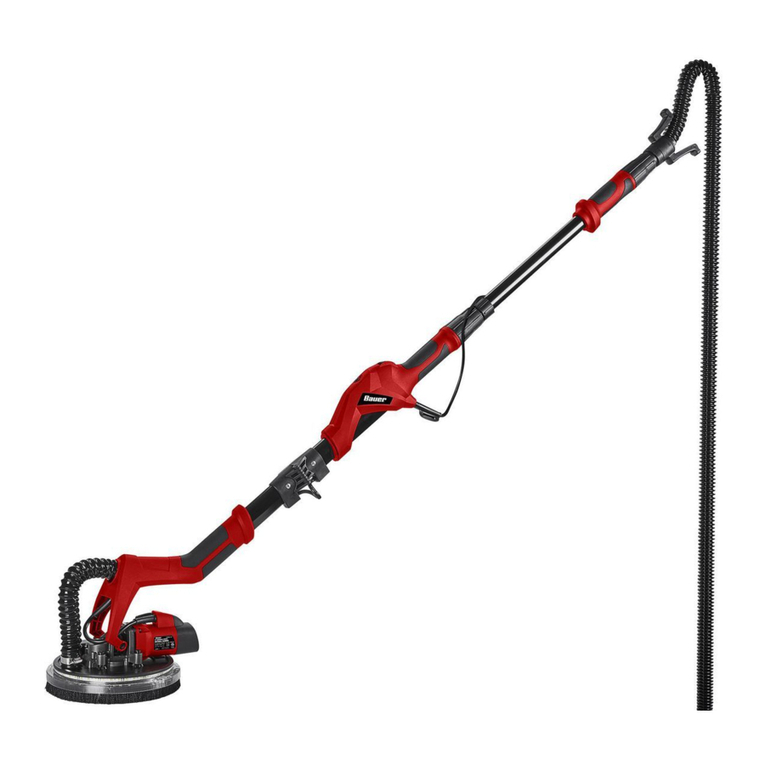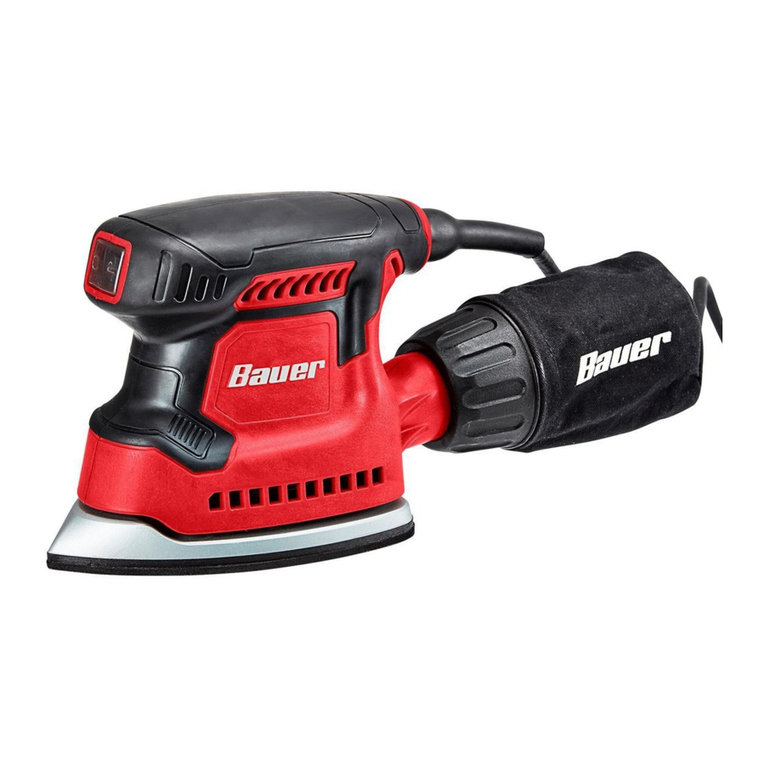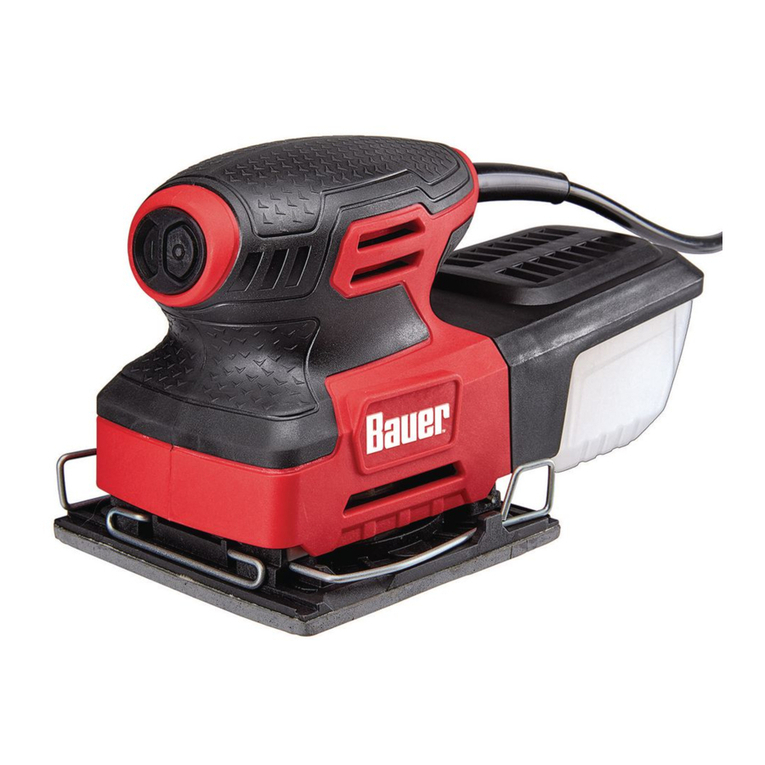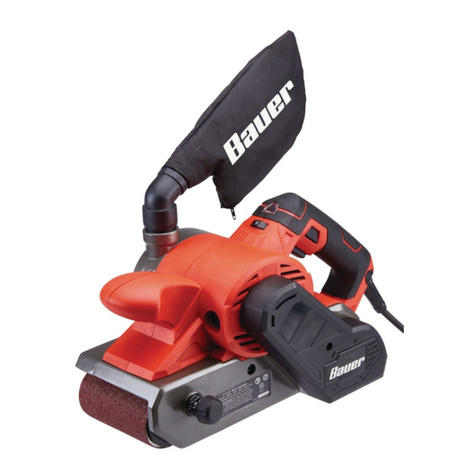
Page 5For technical questions, please call 1-888-866-5797.Item 56178
SAFETYOPERATIONMAINTENANCE SETUP
10. Hold power tool by insulated gripping surfaces
only, when performing an operation where
the accessory may contact hidden wiring
or its own cord. An accessory contacting a
″live″ wire may make exposed metal parts of
the power tool ″live″ and shock the operator.
11. Never lay the power tool down until the
accessory has come to a complete stop.
The spinning accessory may grab the surface
and pull the power tool out of your control.
12. Do not run the power tool while carrying
it at your side. Accidental contact with the
spinning accessory could snag your clothing,
pulling the accessory into your body.
13. Regularly clean the power tool’s air vents.
The motor’s fan will draw the dust inside
the housing and excessive accumulation of
powdered metal may cause electrical hazards.
14. Do not operate the power tool near flammable
materials. Sparks could ignite these materials.
15. Do not use accessories that require liquid
coolants. Using water or other liquid coolants
may result in electrocution or shock.
16. Maintain labels and nameplates on the tool.
These carry important safety information.
If unreadable or missing, contact
Harbor Freight Tools for a replacement.
17. Avoid unintentional starting.
Prepare to begin work before turning on the tool.
18. Do not depress the spindle lock when
starting or during operation.
19. Do not leave the tool unattended when the
Battery Pack is connected. Turn off the tool,
and remove the Battery Pack before leaving.
20. Use clamps (not included) or other practical
ways to secure and support the workpiece to
a stable platform. Holding the work by hand
or against your body is unstable and may
lead to loss of control and personal injury.
21. The battery charger gets hot during
use. The charger’s heat can build up
to unsafe levels and create a fire
hazard if it does not receive adequate
ventilation, due to an electrical fault,
or if it is used in a hot environment.
Do not place the charger on a flammable surface.
Do not obstruct any vents on the charger.
Especially avoid placing the charger on carpets
and rugs; they are not only flammable, but they
also obstruct vents under the charger.
22. This product is not a toy.
Keep it out of reach of children.
23. People with pacemakers should consult their
physician(s) before use. Electromagnetic fields in
close proximity to heart pacemaker could cause
pacemaker interference or pacemaker failure.
In addition, people with pacemakers should:
• Avoid operating alone.
• Do not use with power switch locked on.
• Properly maintain and inspect
to avoid electrical shock.
• Properly ground power cord. Ground Fault Circuit
Interrupter (GFCI) should also be implemented
– it prevents sustained electrical shock.
24. The warnings, precautions, and instructions
discussed in this instruction manual cannot
cover all possible conditions and situations
that may occur. It must be understood by the
operator that common sense and caution are
factors which cannot be built into this product,
but must be supplied by the operator.
Kickback and Related Warnings
Kickback is a sudden reaction to a pinched or
snagged rotating wheel, backing pad, brush
or any other accessory. Pinching or snagging
causes rapid stalling of the rotating accessory
which in turn causes the uncontrolled power
tool to be forced in the direction opposite of the
accessory’s rotation at the point of the binding.
For example, if an abrasive wheel is snagged or
pinched by the workpiece, the edge of the wheel that
is entering into the pinch point can dig into the surface
of the material causing the wheel to climb out or kick
out. The wheel may either jump toward or away from
the operator, depending on direction of the wheel’s
movement at the point of pinching. Abrasive wheels
may also break under these conditions.
Kickback is the result of power tool misuse and/or
incorrect operating procedures or conditions and can be
avoided by taking proper precautions as given below.
1. Maintain a firm grip on the power tool and
position your body and arm to allow you to
resist kickback forces. Always use auxiliary
handle, if provided, for maximum control over
kickback or torque reaction during start-up.
The operator can control torque reactions or
kickback forces, if proper precautions are taken.
2. Never place your hand near the
rotating accessory. Accessory may
kickback over your hand.
